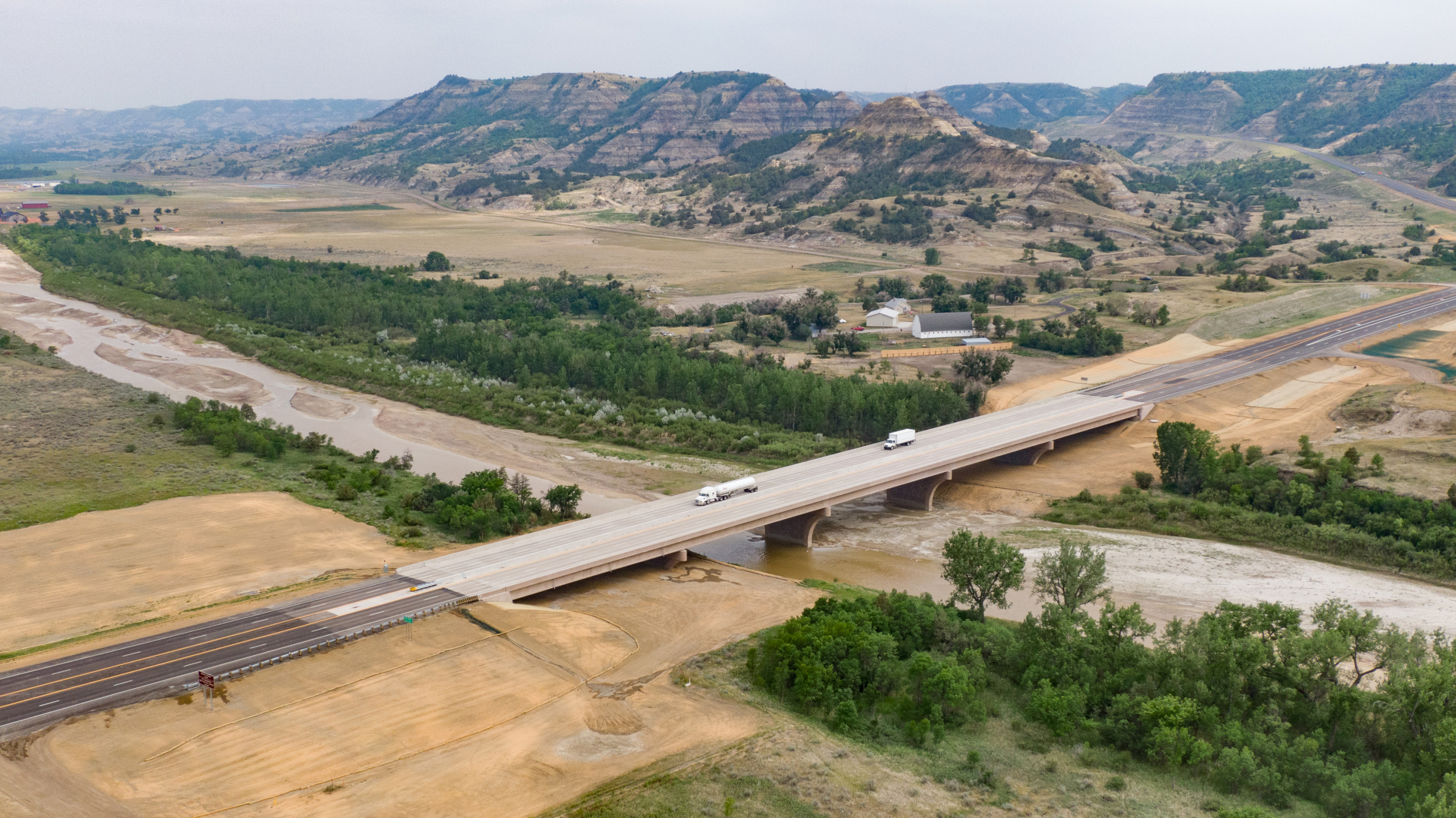North Dakota load restrictions are issued pursuant to authorization of Section 39-12-03, North Dakota Century Code.

Load Restriction Information
Single Axle
By Legal Weight: 20,000 lbs
8 - Ton: 16,000 lbs
7 - Ton: 14,000 lbs
6 - Ton: 12,000 lbs
5 - Ton: 10,000 lbs
Tandem Axle
By Legal Weight: 34,000 lbs
8 - Ton: 32,000 lbs
7 - Ton: 28,000 lbs
6 - Ton: 24,000 lbs
5 - Ton: 20,000 lbs
3 Axle Group or More per Axle
By Legal Weight: 17,000 lbs
8 - Ton: 14,000 lbs
7 - Ton: 12,000 lbs
6 - Ton: 10,000 lbs
5 - Ton: 10,000 lbs
Max. Axle Group
By Legal Weight: 48,000 lbs - not to exceed this gross weight on divisible loads
8 - Ton: 42,000 lbs - not to exceed this gross weight on divisible loads
7 - Ton: 36,000 lbs - not to exceed this gross weight on divisible loads
6 - Ton: 30,000 lbs - not to exceed this gross weight on divisible loads
5 - Ton: 30,000 lbs - not to exceed this gross weight on divisible loads
Gross Weight
By Legal Weight: 105,500 lbs
8 - Ton: 105,500 lbs
7 - Ton: 105,500 lbs
6 - Ton: 80,000 lbs
5 - Ton: 80,000 lbs
About Spring Load Restrictions
The NDDOT bases the initiation of spring load restrictions on the state highway system on the following factors:
- NDDOT uses load restrictions to reduce damage to roadways caused by heavy loads at the time of year when highway pavements are most vulnerable.
- The NDDOT sets load restrictions as weather and roadbed conditions require, then removes these restrictions when roadbeds are stable enough to carry legal weight traffic without damage.
The NDDOT uses three primary factors to assess load restrictions:
- Temperature probes in the base layers of pavement sections. As these temperatures approach 32 degrees Fahrenheit, the NDDOT starts planning the posting of highways with pavement sections that do not have sufficient strength to sustain the transport of heavy loads during periods when pavement base structures are weak.
- Long-range temperature forecast. When long-range temperature forecasts indicate that low temperatures are approaching the freezing point, with daily highs in the upper 30s or 40s, the NDDOT plans load restrictions.
- Falling Weight Deflectometer (FWD). This equipment measures the strength of roadway bases, as well as the asphalt pavement surface. The NDDOT uses the FWD to evaluate pavement strengths for purposes of forecasting when load restrictions may be initiated and removed. The database, which is generated by the FWD in combination with long-range weather forecasts and area-wide moisture conditions, provides the basis for lifting load restrictions.
The NDDOT has observed that the most significant pavement damage occurs during the first four weeks after the onset of spring thaw. Accordingly, the NDDOT closely monitors weather forecasts and sub-base temperatures so load restrictions can be posted on short notice to limit damage to the highway system.
Maps for Legal Limits
- Weight Limitations for Vehicles on State Highways Map (9-1 Annex D)
- This map shows legal gross vehicle weights for vehicles traveling on the ND highway system.
- Designated ND State Highways for Vehicle Combinations Exceeding 75 Feet in Overall Length Map (9-1 Annex B)
- This map shows designated routes and length limits for multiple vehicle combinations and longer combination vehicles traveling on the ND Highway system.
- For authorized vehicle combinations, visit ND Highway Patrol Motor Carrier Operations.
Maps for Permitted Non-Divisible Vehicle/Load Movements
- Permit Bridge Load Limitations Map (9-6 Annex A)
- Approved Routes for Trunnions (9-6 Annex I)
- Highway Load Limitations for Self-Propelled Earth Moving Equipment Map (9-6 Annex B)
- Piggybacking of Scrapers Speed Limit Routing Map (9-6 Annex C)
- Approved Routes for G.V.W. from 150,001 lbs to 250,000 lbs Map (9-6 Annex D)
- Approved Routes for Permitted Non-Divisible Loads Up to 250,000 lbs G.V.W.
- Load Restrictions (Current) Printable Map
- Order 2023-14 Effective 6/20/2023 7:00:00 AM CT
- Bridge Vertical Clearance List
Maps for Permitted Divisible Load Movements
- Weight Limitations for Vehicles on State Highways Map (9-1 Annex D)
- This map shows GVW limits on highways for vehicles using a 10% weight exemption permit or a LCV permit.
- Designated ND State Highways for Vehicle Combinations Exceeding 75 Feet in Overall Length Map (9-1 Annex B)
- Designated Permittable Routes Exceeding 105,500 Up to 129,000 lbs (9-28 Annex A)
- Permit Bridge Load Limitations Map (9-2 Annex A)
- This map shows bridge structures and highways that a vehicle using an Approved Equipment Certificate is prohibited from traveling on.
Contacts and Resources
General Contact Information
- For permits and vehicle size/weight information, contact ND Highway Patrol by calling 701-328-2621.
- For load restrictions information, contact NDDOT by calling 701-328-2545.
- For contact information for NDDOT district offices, visit the NDDOT Districts page.
